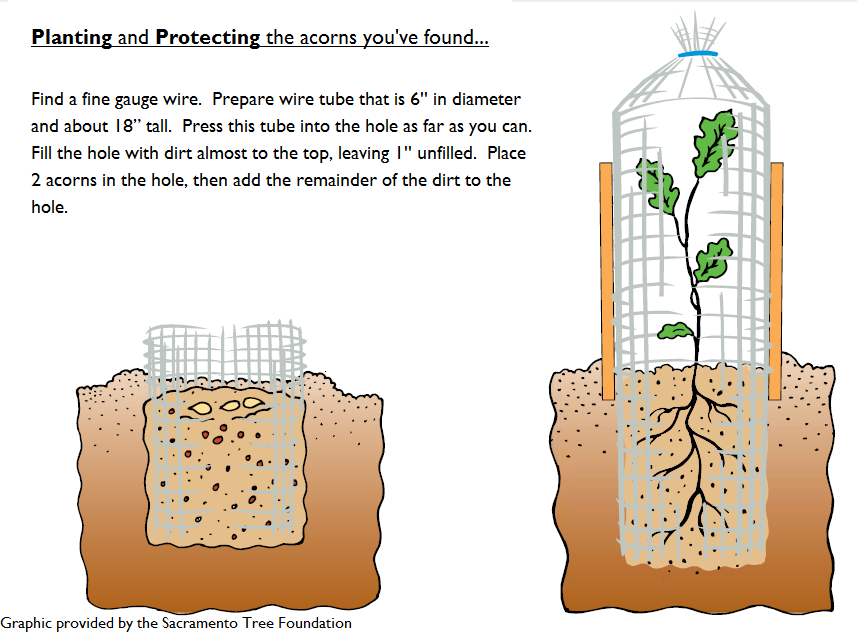This year it seems like we have an abundance of acorns from Valley Oaks. I’ve collected a bunch and plan to find places to plant them. California native oaks such as Valley, Blue, and Coastal Live Oaks, haven’t fared very well over the past decades. Either due to clearing fields for row crops, grazing, or new houses, many oaks have been lost. The City of Elk Grove got its name in part due to the numerous groves of oak trees that used to populate the area. If everyone could plant a few acorns, it could go a long way to restoring these beautiful trees that provide shade in the summer, habitat for birds and other wildlife year round, and are the cornerstone of the classic California landscape our region is known for.
In order to be successful, I needed to learn how to cultivate acorns.
One of our Board members, Nancy Myers, gave me a great hand-out from the Sacramento Tree Foundation. I have summarized some of the key points here:
- Collect acorns that don’t have holes or cracks in them. If the acorn rattles when you shake it, let it be….they won’t germinate but still might be good food for squirrels.
- Plant the acorns right away if you can! Or you can store them for a couple of months in a plastic bag in the frig. Make sure to add a damp cloth to the bag but don’t let mold grow.
- When you are ready to plant check if the acorn will float in a bowl. If an acorn floats don’t plant it. If roots have already sprouted, no need to do the float test. They are ready for planting.
- Dig a hole 10” deep and 6” wide. Find a fine gauge wire. Prepare wire tube that is 6” in diameter and about 18” tall. Press this tube into the hole down as far as you can, fill the hole to within 1” of the top with the dirt you dug out, place 2 acorns in the hole, then add the remainder of the direct almost to the top. Water you newly planted acorn with two good waterings, making sure the acorns stay put and have lots of water to get started. Close the top of the wire house so nothing can get in.
- Keep watering regularly until the rain starts.
- Within a few months, seedlings should appear. If both acorns germinate, wait until one is at least 6” tall, then remove the smaller of the two. Try to keep the area weed free. Adding mulch will help.
- Add stakes or a landscaping flag so the seedling doesn’t get eaten by the lawnmower or trips someone.
The Sacramento Tree Foundation’s brochure has lots more information. Click Here to view this great brochure.
Good luck!!!


